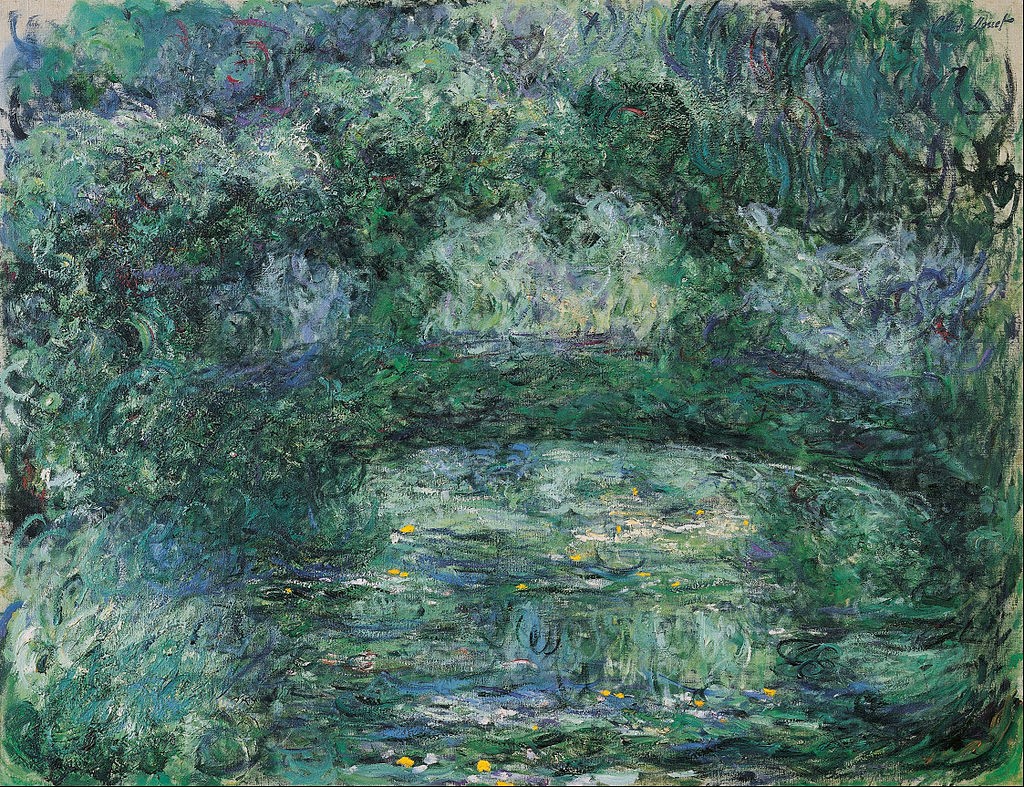Claude Monet: The Japanese Bridge (Image public domain)
I’ve just finished reading Mad Enchantment by Ross King, about the later years of Claude Monet’s life. It covers the many years that Monet slaved over the giant water lily canvases that now grace the Orangerie in Paris.
Reading about the Impressionist painters, you might imagine that they worked quickly, capturing the perfect slant of light. Indeed, when painting outdoors, Monet would often set up multiple easels and move between them as the light changed, working rapidly.
But that quick work is only part of the story.
Monet took the canvases back to the studio and continued to add colors and textures. Many of the effects unique to Monet are the product of many passes with the brush. On close inspection, the ephemeral glance of light on water might result from multiple, thick layers of paint, with visible brushstrokes
According to King’s sources, in some points the larger water lily canvases have up to fifteen layers of paint. Wow.
The Writing Parallels – Layering the Draft
You might say that Monet completed the “ugly first draft” of his paintings as he worked outdoors, and then revised them back in the studio. But what happened in the studio was clearly more than fixing a spot here and there. He was creating and painting. He was layering.
Writers often do something similar. We create the ugly first draft, then go back and add texture, layers, and detail. This phase isn’t exactly revision. We’re still writing the first draft.
The journalist and writing teacher Donald Murray referred to this process as layering, using the painting analogy.
While it would seem to prolong the drafting process, adding a layering pass may make the writing go faster, because it frees you to work fluidly when drafting.
Adding a layering pass can accelerate your drafting.
When you plan to take layering pass through the draft, you give yourself permission to write quickly while your brain is firing, just as Monet painted before the light faded. You ignore imperfections because you know will add layers and depth before revising and polishing. It’s freeing.
Cautionary Tales from Monet
According to King’s book, Monet tortured himself with these paintings, working on some for years. He burned some of his paintings that he could not conquer.
Let’s not go there.
It took pressure from friends and the failure of his health to persuade him to release his final works. He had the luxury of a long and illustrious career behind him, and was focused on his enduring legacy.
Most of us are trying to get the work done; legacy isn’t one of our problems.
Layering turns into revision, but eventually revision must lead to publication. Know when you let your words are “good enough” to be out in the world so you can move on and keep growing.
Related Reading
Two Reasons Not To Revise As You Draft
Mad Enchantment by Ross King
The Japanese Bridge image is public domain, at Google Cultural Institute
